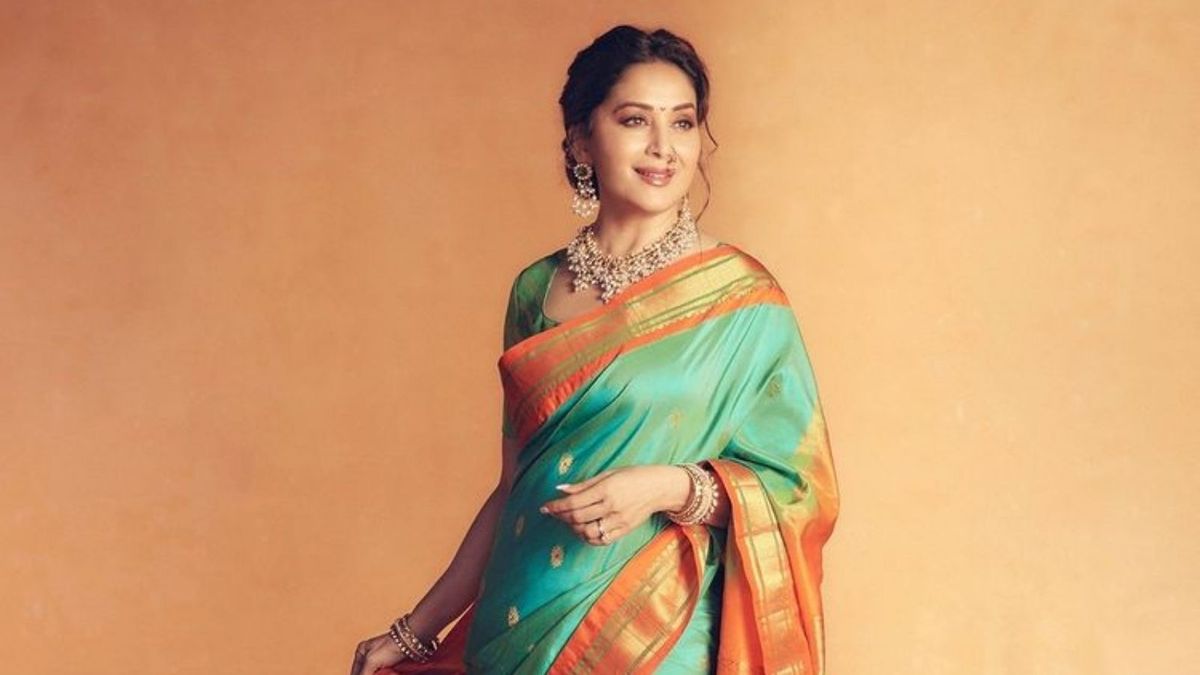Paithani saree is a timeless ethnic piece of clothing found in many Maharashtrian women’s wardrobe. The saree features vivacious colours and royal borders, and is crafted in rich silk. However, the silk handloom also carries a cultural significance and a history that dates back to the second century BC. The fascinating history of the Paithani saree is nothing short of a tale—a tale of tradition, beauty, elegance, and grandeur.
What is Paithani saree?
Paithani sarees are silk sarees that are embellished with zari pallu, border, and traditional motifs. The saree is well-known for its distinctive and traditional motifs that dominate the border and pallu. From conception to completion, the creation of the stunning silk and zari combination is done by hand—no machines are used in the making of this saree. The saree is available in a variety of colours.
History of Paithani saree
Paithani finds a mention in the Rigveda—the oldest extant Indic text. It is believed that the Paithani saree originated in the Satavahana dynasty. Since it was first crafted Paithan, a town in Maharashtra's Aurangabad, it was named Paithani.
Many speculate that the saree flourished during the Mughal era, especially during Aurangzeb's rule. Legend has it, the Mughal ruler punished jamdani weavers in order to boost the popularity of the Paithani saree, which resulted in a slew of new details being added to this historical drape’s appearance. After a brief setback, this handloom gained popularity again during the Peshwas' reign in the 17th century. To help Paithani silk flourish and have a stronghold in the state, Peshwas relocated all handloom Paithani weavers to Yeola, a town in Nashik in Maharashtra. Surprisingly, Yeola is the main production centre for this saree even today.
The weaving process of a Paithani saree
While the saree exudes opulence, the weaving process is time-consuming. It takes anywhere from six months to two years to finely prepare one saree. The tapestry weaving technique on silk fabric with zari work of pure gold and silver makes it one of the most sought-after options in the world of traditional handloom sarees. The raw materials required for the making of a Paithani saree include mulberry silk, zari, and organic dyes.
Decoding the Paithani saree-making process
The most crucial part in the making of a Paithani saree is dying of the silk. Organic dyes derived from various roots, flowers, and metal oxides are used to colour the silk. The range of colours is obtained by combining various mordants and natural dyes.
The entire process of weaving a Paithani saree by hand is done on a loom. For the uninitiated, a loom is made of teak wood. The main components of a loom are:
Ata: Back beam with 17 divisions
Dhol: Warping beam/warp roller
Hatya: Beater
Dhota: Shuttle
Pavdya: Treadles
Phani: Reed heddles
Tulai: Cloth roller
Kandya: Bobbin
Once the warp and the weft are ready, the saree undergoes the weaving process. The painstaking workmanship that follows is divided into five steps:
Step 1: The first step is to weave its padar or pallu, which can be done with either a silk warp or zari work. Originally, Paithani zari work had a silver base coated with a gold wash. However, bronze is now used as the base.
The weaving of the pallu can take anywhere between two weeks and a few months, depending on the length, level of detail, and design of the motif. The weaver counts the number of threads used to maintain consistency throughout the weave.
The pallu usually has a central element, which is also known as the motif. Peacocks, lotuses, trees with peacocks or flowers, or peacocks in a circle are frequently used as the central element. Interestingly, due to the proximity of the saree's birthplace to Ajanta caves, the influence of Buddhist paintings can be seen in the woven motifs.
Step 2: The next step is to pay close attention to the body of the saree, which includes borders on both edges.A Paithani saree typically has 200-300 buttis, and each butti is handwoven in gold or silver zari. Flowers, peacocks, birds, petals, and paisa, among other motifs, are woven into the buttis.
Step 3: The third step in the weaving process of a traditional Paithani saree is to monitor the tana (wrap) for equal thread tension. Even a single unequal tana can cause snarls in the fabric of the saree. To tighten the tana, the weaver wets it with water to increase tension.
Step 4: The zari is polished with a mixture of water and gum after weaving every 3 to 4 inches to keep it stiff and to preserve it. The zari polish seals loose threads and stiffens the entire border. The copper- or silver-based coated zari with gold, silk tana, and zari bana adds a splash of colour to the border.
Step 5: In the final step, the weaver combines different colours of bana and tana to create a more vibrant colour spectrum for the Paithani saree.
In every way, the Paithani saree is the epitome of royalty. So, the next time you go shopping for a Paithani—you'll know that it's more than just a piece of clothing. It's art.
Disclaimer: The details mentioned throughout this blog are sourced from publicly accessible platforms. At Zeezest, we intend to share factual and verified information. Should there be any inconsistencies or variances in the information provided, please understand that these are entirely unintentional and not meant to mislead.


